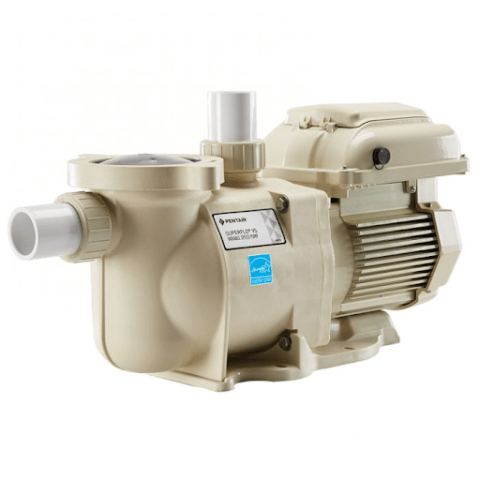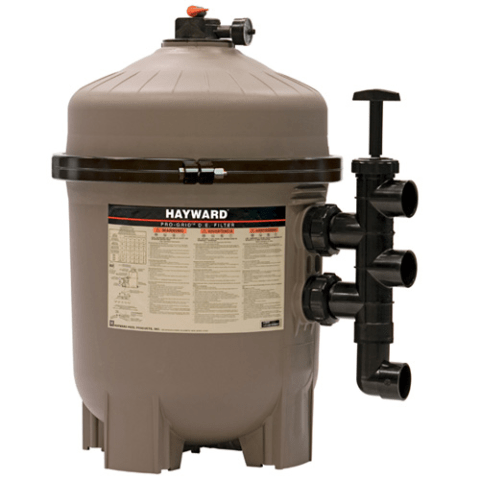Pool Perfect: Beginner Maintenance Tips
Hey there, pool owners and future experts! I've been in the pool maintenance game for a while now, and I'm here to make taking care of your pool way easier. Imagine a hot summer day, and you're diving into a crystal-clear pool that you've kept sparkling clean all by yourself. Sure sounds good, doesn't it?
If you're new to this, I get it. Pool maintenance can seem like a lot to handle—chemicals, filters, cleaning schedules—it's enough to make your head spin. But trust me, once you know what you're doing, it's a piece of cake. Plus, it saves you from expensive fixes later on.
In this guide, I'll cover all the basics to kickstart your pool maintenance journey. I'll break down the jargon, explain how your pool works, help you figure out its size, and list all the stuff you'll need to keep it in tip-top shape.
Then, I'll discuss the three big things you need to know about proper pool care: circulation, cleaning, and chemistry. Once you master these, you'll be well on your way to being a pro.
Additionally, I'll help you set up a simple weekly maintenance routine and give you some easy tips for keeping your pool looking great.
And don't worry, even if you're jetting off on vacation, we've got you covered. We'll share some tricks to keep your pool happy while you're away.
So, are you ready to jump in? Whether you've got a massive Olympic-sized pool or a cozy hot tub, I've got all the info you need to keep it in top shape. Grab a drink, find a comfy spot to chill, and let's do this!

Dive into the world of pool care lingo!
pH Level: It's like checking if your pool water is too sour or too sweet. Aim for just right!
Alkalinity: Think of it as your pool's bodyguard against sudden changes. It keeps things steady.
Chlorine: The superhero that fights off germs and gunk in your pool. It comes in different forms, like tablets or liquids.
Shock: Imagine giving your pool a power boost to zap away any nasty stuff lurking in the water.
Cyanuric Acid (CYA): This one's like sunscreen for your chlorine, making it last longer against the sun's rays.
Total Dissolved Solids (TDS): It's all the stuff hanging out in your pool water. Too much can cloud things up.
Backwash: It's like giving your pool filter a good shake to kick out the dirt and debris.
Putting it into action: If your pool's pH is off, add a pH reducer. If chlorine levels are low, add more or adjust your chlorinator. Knowing these terms helps you fix pool problems like a pro! Keep these basics in mind for a clear and healthy pool!
Are you new to pool ownership? Don't fret! Let's explore the magical world of pool parts:
Pool Pump: Imagine it as the heart of your pool, pumping water to keep it fresh, just like your heart pumps blood to keep you going.


Skimmer and Drains: The skimmer catches floating debris like leaves, while drains at the bottom push water and debris toward the filter system.

Pool Filter: This is your pool's "kidney," cleaning out small debris collected by the skimmer and drains. There are different types, such as sand, cartridge, and DE filters, each with its perks.
Return Jets: These jets not only return sanitized water to the pool but also help circulate water efficiently in one direction.

Pool Water: Balancing your pool's water with the right chemicals is key. Test it often, especially after heavy use or rainstorms, and tweak the chemicals as needed.

Understanding these parts sets the stage for a stunning pool that's easy to maintain. Dive in and enjoy the splashes with minimal effort!
Knowing the size of your pool is super important for keeping it clean and sparkling! Whether it's rectangular, square, or circular, the volume of water affects how much cleaning stuff you'll need and how long your pump should run.
Rectangular or Square Pools (with Uniform Depth)
For square or rectangular pools with the same depth throughout, you just multiply the length, width, and depth, and then by 7.5. Easy peasy! So, if your pool is 10 feet long, 5 feet wide, and 6 feet deep, you've got 2,250 gallons of water to swim in.
Pools with Varying Depths
But if your pool's depth varies, like many in-ground pools, you've got to find the average depth first. Just add the shallow end depth to the deep end depth, then divide by 2. Then, you can use the same formula. For example, a pool that's 15 feet long, 10 feet wide, with depths of 3 feet on one end and 9 feet on the other, would hold 6,750 gallons.
Circular Pools
Circular pools? No problem! You just need the radius (half the diameter) and the average depth. Multiply those, and then by 7.5. If your circular pool has a 5-foot radius and an average depth of 6 feet, you're looking at around 3,555 gallons of water fun!
Knowing how much water your pool holds helps you keep it in tip-top shape. You'll know exactly how many chemicals to add and how long to run the pump. So, measure up and dive in for some stress-free swimming!
Get to know the world of pool care with these essential tools:
Pool Test Kits or Test Strips: Check your pool's pH, alkalinity, and sanitizer levels for a balanced swim.
Telescopic Pole: Extendable for various tasks like brushing and netting, making pool maintenance a breeze.
Pool Brushes: Scrub away algae and dirt from pool surfaces to keep it sparkling clean.
Leaf Skimmer/Net: Say goodbye to floating debris like leaves and bugs with this handy tool.
Pool Vacuum: Keep the bottom clear of dirt and algae, ensuring a pristine pool floor.
pH Increaser and Reducer: Maintain the perfect pH balance for comfortable swimming.
Chlorine or Other Sanitizers: Fight off bacteria and algae to keep your pool safe and inviting.
Pool Shock: A quick fix to eliminate contaminants and maintain water clarity.
Algaecide: Prevent and kill algae growth for a crystal-clear pool.
Pool Filter Cleaner: Keep your filter system efficient for optimal water circulation.
With these tools, you'll master the three C's of pool maintenance: circulation, cleaning, and chemical balance, ensuring a healthy and enjoyable swimming experience.
Let's uncover the secrets to keeping your pool pristine and inviting with what I like to call the Three C's: Circulation, Cleaning, and Chemistry. These are the key ingredients for a safe and enjoyable swimming experience right in your backyard.
Circulation
First up, Circulation. Picture this: water flowing smoothly through your pool, keeping it fresh and clean. That's what circulation is all about. By running your pool pump regularly, you ensure that the water is constantly filtered, removing any gunk and evenly spreading out the essential chemicals. It's like giving your pool a nice, refreshing hug every day.
Cleaning
Next, Cleaning. It might sound like a no-brainer, but keeping your pool clean is crucial. From skimming off leaves to vacuuming the floor and brushing the walls, regular cleaning prevents nasty stuff like algae from crashing your pool party. Make it a weekly habit to give your pool some TLC, especially in those sneaky spots where dirt likes to hide.
Chemistry
Last but not least, Chemistry. Think of it as the secret potion that keeps your pool water safe and crystal clear. Monitoring things like pH levels and sanitizer levels ensures that your pool stays healthy for swimming. It might sound a bit intimidating at first, but with a good testing kit and a little practice, you'll become a chemistry wizard in no time.
By mastering the Three C's, you'll transform your pool into a sparkling oasis where friends and family can splash and play without worry. And if you ever need a helping hand, don't hesitate to reach out to us for some expert advice. Here's to endless days of fun in the sun!
Owning a pool can be challenging, especially when it comes to keeping it clean and safe. But don't worry—I've got some easy tips to help you out!
First things first, consistency is key. Keeping up with regular maintenance stops small issues from becoming big problems. So, let's make a simple weekly plan:
Day 1: Test and Adjust
Start your week by checking your pool's water. You'll want to test the pH, alkalinity, and chlorine levels. Aim for pH between 7.4 and 7.6, alkalinity between 80 and 120 ppm, and free chlorine between 1 and 3 ppm.
Day 2: Skimming
Take a few minutes to skim your pool for leaves and bugs. It might not seem like much, but it keeps your pool looking clean and helps your filter work better.
Day 3: Filter Check
Midweek, give your pool's filter a once-over. Depending on what type you have, you might just need to clean it or give it a good backwash.
Day 4: Basket Cleanup
Empty the pump and skimmer baskets. They can gather debris that might clog your pool's system.
Day 5: Surface Scrub
Use a pool brush to scrub the sides and bottom of your pool, especially where algae likes to hang out.
Day 6: Vacuuming
Give your pool a good vacuum once a week. This gets rid of any visible dirt and helps keep your pool's chemicals mixed properly.
Day 7: Chemical Check
Wrap up your week with another water test to make sure everything's balanced.
Remember, your pool's needs can change, so feel free to adjust this plan as you go. With these simple steps, you'll be on your way to enjoying a clean and sparkling pool all season long!
Dive into pool care like a pro! Here's a simple breakdown to keep your oasis sparkling:
Daily Dip
Check-Up: Take a peek at your pool's clarity and color. You want clear water, not cloudy or green.
Skim the Surface: Use a long-handled skimmer to scoop up any floating leaves or debris. Easy peasy!
Weekly Splash
Water Test: Get friendly with test kits to check chlorine, pH, and other levels. A balanced pool is a happy pool.
Chemical Check: Adjust chemicals as needed to keep things balanced. Follow the instructions like a pro!
Brush and Vacuum: Give your pool walls and floor some TLC with a brush and vacuum. Say goodbye to debris and algae.
Monthly Dip
Shock Treatment: Amp up the chlorine to kick algae and contaminants to the curb. Monthly is usually good, but hot weather might call for more.
Pro Check-Up: Once a month, take a water sample to the pros for a thorough test. They'll help iron out any wrinkles.
Starting with these steps will keep your pool in shipshape. As you get more experienced, you might want to dive deeper into specific care. But for now, let's keep it crystal clear!
Are you heading off on vacation? Don't let worries about your pool ruin your relaxation time. Follow these simple steps to keep your pool in top shape while you're away:
Precautionary Steps
Before you go, give your pool some TLC. Clean it thoroughly, treat it with chemicals, and ensure the filter system gets a good run. A shock treatment before you leave will keep bacteria at bay longer.
Maintenance for Long-Term Absences
If your vacation is longer than a week, consider hiring a pool pro or asking a trusted neighbor to check-in. You can also set up automated equipment to keep chemicals balanced and water circulating. A pool cover can also help keep things tidy.
After Your Return
When you're back, test the water and adjust as needed. You might need to shock the pool again and run the filter longer to get it sparkling clean.
With a little prep and maybe some tech help, your pool will be fine while you're off having fun!
Diving into pool maintenance might seem intimidating, but it's totally manageable! Sure, it takes commitment to keep up with regular care, but the perks of owning a pool make it all worth it. Imagine diving into crystal-clear water whenever you please! This guide will give you a great starting point. Just remember, every pool owner starts as a beginner. With time, patience, and a little practice, you'll become a pool maintenance pro.
Keeping your pool clean and inviting is totally doable with the right help. Sign up for our email list and get expert tips and special savings sent straight to your inbox. Don't miss out on these exclusive benefits—join our community of pool lovers today!

